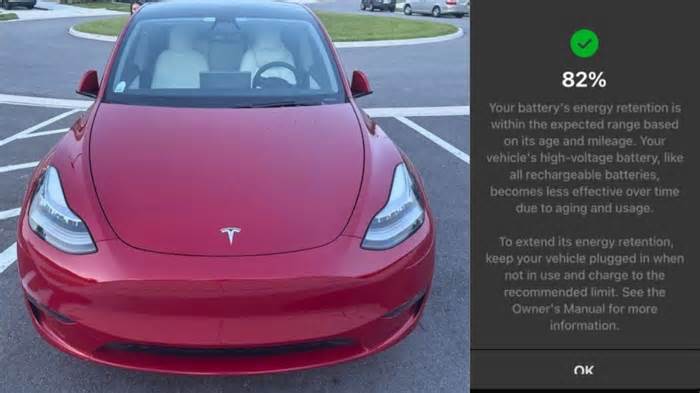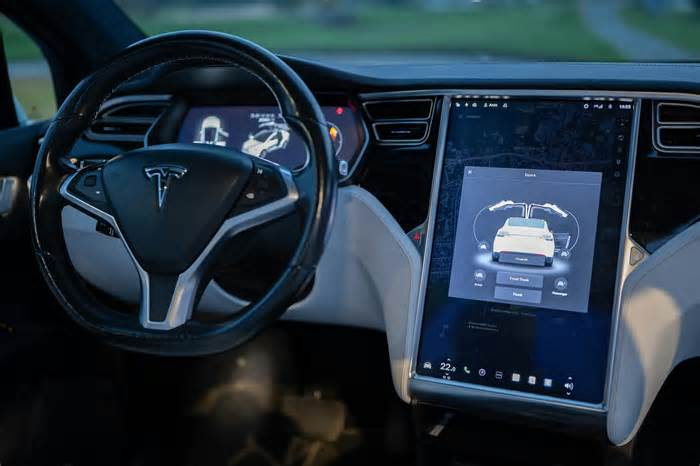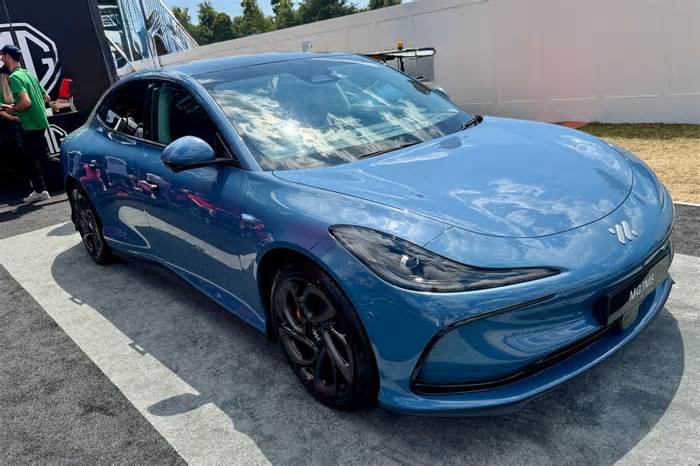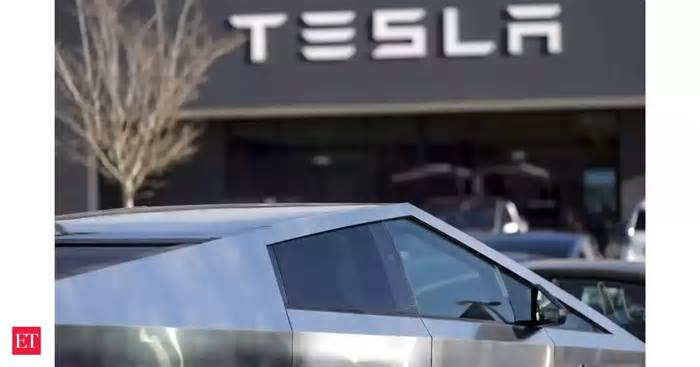
Feeling a Bit Worried For Buying a 2021 Tesla Model Y With 50,000 Miles And Not Asking For The Battery Health Test Before The Purchase
- by Torque News
- Jul 12, 2025
- 0 Comments
- 0 Likes Flag 0 Of 5

Advertising
When it comes to buying a used EV, there’s often a wave of excitement that clouds out the more technical questions many should be asking. That’s what seems to have happened to Andrea Gariti, a new Tesla owner who thought she found the perfect deal on a 2021 Model Y Long Range model until one month later.
She shared her concern in the "Tesla Model Y" Facebook group: “Just did a battery health test. Feeling a bit worried that my Tesla is a 2021 Model Y Long Range with 50k miles. I just bought it a month ago at a private sale and regret not asking for the battery health test before purchase. Runs great and I love it, but should I be worried?”
Her post caught traction drawing in owners who’ve walked similar paths, some with reassurance and others with caution. But all of them shared a key message: battery degradation is real, but it’s not always what it seems at first glance.
How Bad Is Battery Degradation in a Used Tesla?
It’s clear that she saw a number that made her uneasy. In the Tesla community, anything below 90% battery health, especially on a Model Y with just four years of age, tends to raise eyebrows. Yet it’s important to understand that the first few percentage points of range loss typically happen faster, and many owners report that things stabilize afterward.
As commenter Lin Pato pointed out, “82% after just 4 years is disappointing, but I heard it stays there for quite a while.”
That point is actually backed up by plenty of long-term EV owners who’ve done their own tracking. In fact, one Tesla owner explained about their early Model Y battery degradation that saw quicker loss in the beginning, but their numbers remained flat after.
What Owners Had to Say
Matthew Espinoza responded to Andrea’s post, writing, “For the year, regardless of the mile recordings, yeah this is pretty much normal. But yes you should’ve asked for a battery health test.”
He makes a solid point. In private sales especially, there are likely no warranties or detailed diagnostics like you’d get from Tesla directly. A third-party battery health report, even something done with apps, can reveal a lot and probably should be a standard part of any EV purchase.
Brandon AG offered a more optimistic perspective: “If there’s still Model S vehicles from 2013–2014 on the road with the original battery, you shouldn’t even be concerned. The Model 3s have newer battery tech.”
While the Model Y is based on the Model 3 platform and uses similarly advanced 2170 cells, it's worth diving deeper into what that actually means.
The Model Y uses Tesla's 2170 lithium-ion battery cells, which are more energy-dense and thermally efficient than the older 18650 cells used in early Model S vehicles from 2013–2014. The 18650s were pioneering at the time but have since been surpassed by the 2170s in terms of charging speed, thermal management, and long-term capacity retention.
This difference in battery chemistry and architecture helps explain why newer Teslas tend to have more stable degradation curves. It's also the reason why it doesn't typically matter if it was driven harder or supercharged more frequently.
Advertising
That said, real-world battery longevity can still vary significantly based on climate and charging habits. It's definitely encouraging to see decade-old Teslas still running strong, but the better the tech gets, the more we will see real-world stories like this Model 3 surpassing 200,000 miles on its original battery.
That’s not to say battery degradation isn’t something to take seriously. But the fear often comes from misunderstanding what the numbers actually mean. Range loss doesn’t scale linearly with battery life. A 10% loss doesn’t mean 10% closer to a new pack. It means the first phase of capacity settling may be over.
Battery Tests Shouldn’t Be an Afterthought
Andrea’s experience isn’t unique. Many buyers associate Tesla’s premium brand image with an assumption of “good battery” regardless of age or mileage. And while Teslas are generally robust, the battery pack is still a wear item, just like tires or brake pads.
A healthy battery affects not just range, but also resale value and charging performance as well of course. Another owner recently shared how their 2023 Tesla Model Y Performance experienced faster-than-expected battery health drop too, leading them to question whether they had done something wrong or if this was normal.
It’s Not Just About the Numbers
Tesla’s battery health stats can also be misleading if taken out of context. For example, battery state-of-health (SOH) doesn’t always translate to exact real-world range. That’s because Teslas use adaptive range estimations based on your driving habits and climate conditions.
This means a driver in Arizona could see different degradation than someone in coastal Oregon, despite owning the same model with similar mileage. Add to that the fact that Tesla doesn’t offer an official battery health report, such as downloadable summaries or diagnostic sheets detailing battery state-of-health metrics, and you’ve got a system where DIY tools are often the only real insight buyers can get.
So this is why I think Andrea’s situation hits on something bigger than just one purchase regret. It reveals a learning curve that’s still catching up to the EV boom. It could be easy to assume that a Tesla is “just good to go,” but battery health is the silent force behind everything you love about the car. Skipping that one test might not affect you immediately, but it leaves room for doubt.
Key Takeaways
Battery health tests should never be skipped when buying a used EV, especially from a private seller.
Early battery degradation is common but often stabilizes, so don’t panic if you see lower SOH numbers early on.
Tesla owners frequently share stories of long-term battery life, which can offer reassurance when taken in context.
Real-world usage, climate, and charging patterns play a huge role in how your battery ages.
The EV world still lacks consistent transparency tools for buyers, something that may need to change as secondhand electric cars become more common.
What About You?
Have you ever bought a car and wished you had done more checks? Like a battery test or charging history review?
And for those of you who have already owned a Tesla longer term, how's your battery holding up after 50,000 miles? Would you still buy the same car again?
Don't hesitate to share your thoughts in our comments to help others avoid the same uncertainty.
Aram Krajekian is a young automotive journalist bringing a fresh perspective to his coverage of the evolving automotive landscape. Follow Aram on X and LinkedIn for daily news coverage about cars.
Image Sources: The “Tesla Model Y” public Facebook group and Tesla’s gallery, respectively.
Please first to comment
Related Post
Stay Connected
Tweets by elonmuskTo get the latest tweets please make sure you are logged in on X on this browser.






 Energy
Energy

















